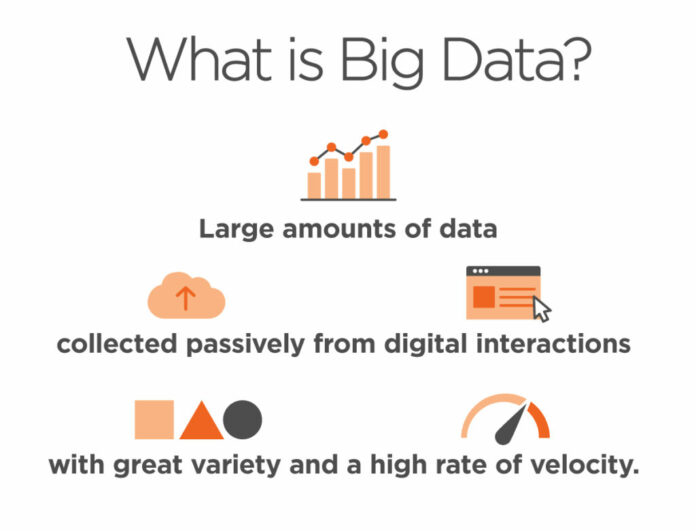What is Big Data?
Big data” is high-volume, velocity, and variety information assets that demand cost-effective, innovative forms of information processing for enhanced insight and decision making.”
Examples Of Big Data
The New York Stock Exchange is an example of Big Data that generates about one terabyte of new trade data per day.

Social Media

A single Jet engine can generate 10+terabytes of data in 30 minutes of flight time. With many thousand flights per day, generation of data reaches up to many Petabytes.

Types Of Big Data
- Structured
- Unstructured
- Semi-structured
Structured
Data stored in a relational database management system is one example of a ‘structured’ data.
Examples Of Structured Data
An ‘Employee’ table in a database is an example of Structured Data
| Employee_ID | Employee_Name | Gender | Department | Salary_In_lacs |
|---|---|---|---|---|
| 2365 | Rajesh Kulkarni | Male | Finance | 650000 |
| 3398 | Pratibha Joshi | Female | Admin | 650000 |
| 7465 | Shushil Roy | Male | Admin | 500000 |
| 7500 | Shubhojit Das | Male | Finance | 500000 |
| 7699 | Priya Sane | Female | Finance | 550000 |
Unstructured
Any data with unknown form or the structure is classified as unstructured data. A typical example of unstructured data is a heterogeneous data source containing a combination of simple text files, images, videos etc.
Examples Of Un-structured Data
The output returned by ‘Google Search’

Semi-structured
Semi-structured data can contain both the forms of data.
Examples Of Semi-structured Data
Personal data stored in an XML file-
<rec><name>Prashant Rao</name><sex>Male</sex><age>35</age></rec> <rec><name>Seema R.</name><sex>Female</sex><age>41</age></rec> <rec><name>Satish Mane</name><sex>Male</sex><age>29</age></rec> <rec><name>Subrato Roy</name><sex>Male</sex><age>26</age></rec> <rec><name>Jeremiah J.</name><sex>Male</sex><age>35</age></rec>
Data Growth over the years

which is unstructured, consists of log files, transaction history files etc.
Characteristics Of Big Data
- Volume
- Variety
- Velocity
- Variability
(i) Volume – The name Big Data itself is related to a size which is enormous. Size of data plays a very crucial role in determining value out of data.
(ii) Variety – The next aspect of Big Data is its variety.
This variety of unstructured data poses certain issues for storage, mining and analyzing data.
(iii) Velocity – The term ‘velocity’ refers to the speed of generation of data.
Big Data Velocity deals with the speed at which data flows in from sources like business processes, application logs, networks, and social media sites, sensors, etc. The flow of data is massive and continuous.
Advantages Of Big Data Processing
Access to social data from search engines and sites like facebook, twitter are enabling organizations to fine tune their business strategies.
- Improved customer service
- Early identification of risk to the product/services, if any
- Better operational efficiency





